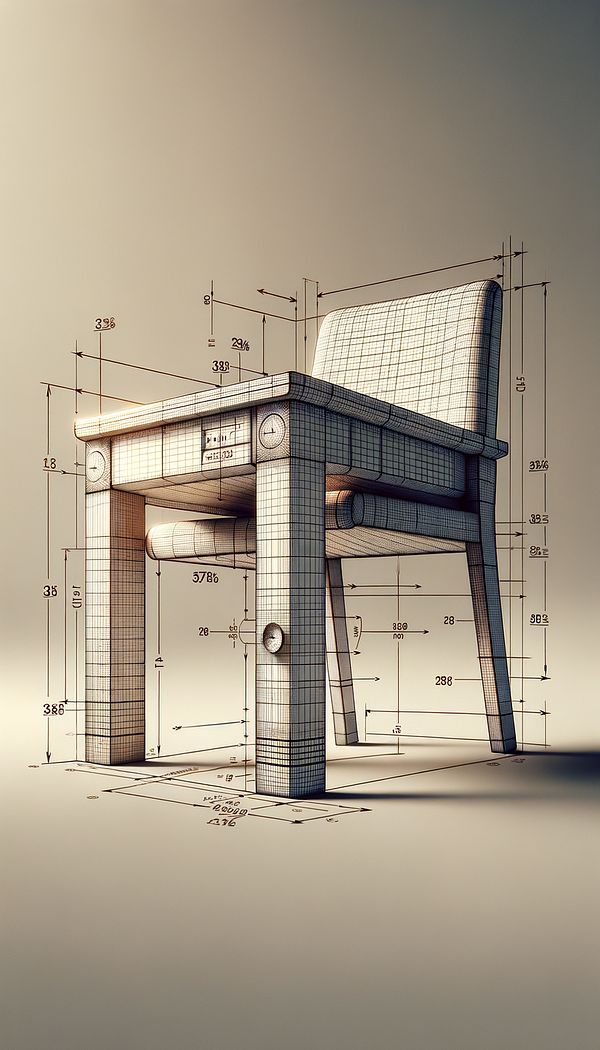What is Furniture Dimensions?
Furniture dimensions refer to the measurements of a piece of furniture, including the height, width, depth (or length), and sometimes weight.
Description
Understanding furniture dimensions is crucial in interior design as these measurements impact the spatial arrangement and the overall aesthetic of a room. Furniture dimensions determine how a piece of furniture will fit into a space, both physically and visually. Height, width, and depth are the primary dimensions considered, with weight sometimes taken into account for handling and stability purposes.
In addition to helping designers and homeowners ascertain whether a piece of furniture can fit through doorways and in the designated spaces, knowing the dimensions is essential for creating a balanced and harmonious environment. Furniture that is too large can overwhelm a space, while pieces that are too small can appear insignificant or out of place. Furthermore, understanding dimensions is vital for accessibility and ergonomics; ensuring adequate space for movement and comfortable use of the furniture.
When planning the layout of a space, the dimensions of furniture influence not only aesthetics but also functionality. Accurate measurements allow for efficient space planning and layout, optimizing room flow and the interaction between different pieces of furniture.
Usage
In an office setting, a designer measured the dimensions of various desks to ensure they would fit comfortably in the space allocated and allow enough room for movement. In a residential project, a homeowner used the dimensions of a sectional sofa to ascertain it would balance well with the size of the living room and other furniture pieces.
FAQs
-
What are the primary furniture dimensions?
The primary furniture dimensions include height, width, and depth (or length). Weight is also considered in some cases.
-
Why are furniture dimensions important in interior design?
Furniture dimensions are important as they impact spatial arrangement, aesthetics, accessibility, ergonomics, and overall functionality within a space.
-
How do furniture dimensions affect space planning?
Furniture dimensions influence space planning and layout by determining how pieces fit and interact within a room, affecting both aesthetics and functionality.
-
Can furniture dimensions impact a room's appearance?
Yes, furniture dimensions can significantly impact a room's appearance. Incorrect dimensions can make a space feel cramped, overwhelmed, or poorly balanced.
Practical Application
When selecting furniture, always start by measuring the intended space to ensure the piece will fit both physically and aesthetically. Consider the scale and proportion of the furniture in relation to the room and other furnishings. Lastly, for practicality, verify that the furniture can navigate through doorways, hallways, and staircases to reach its designated spot.
-
Furniture Types599 articles
-
Space Planning & Layout134 articles
-
Accessibility & Ergonomics30 articles
-
IndustrialIndustrial refers to a design style that draws inspiration from old factories and industrial spaces.
-
PoudressePoudresse refers to a small, elegant dressing table, often with a mirror, dedicated to the application of makeup and the storage of beauty products.
-
NeoclassicalNeoclassical is a design movement inspired by the classical art and culture of ancient Greece and Rome.
-
ContemporaryContemporary refers to what is current and popular in interior design at any given time.
-
Twin Extra LongTwin Extra Long (Twin XL) is a mattress size that is longer than a standard twin.
